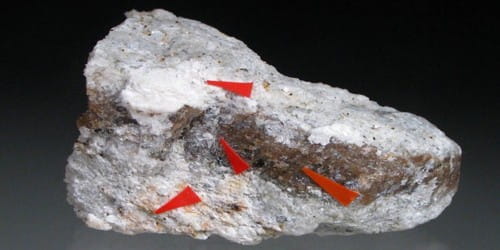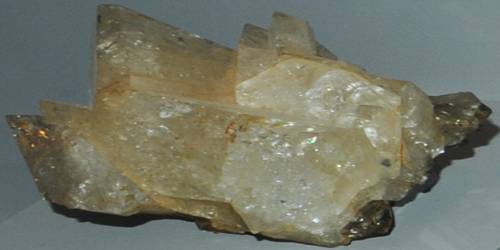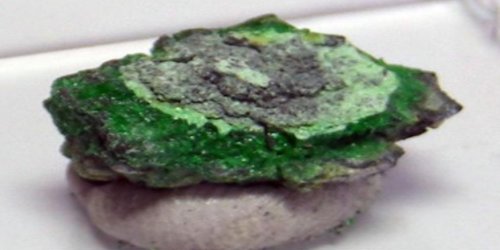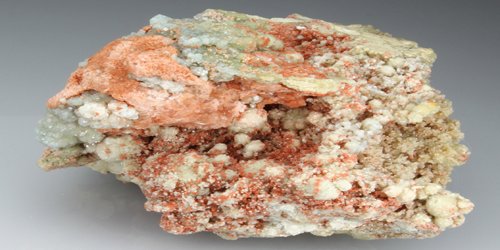Macdonaldite is a rare barium silicate mineral with a chemical formula of BaCa4Si16O36(OH)2·10H2O. It is an orthorhombic-dipyramidal mineral containing barium, calcium, hydrogen, oxygen, and silicon. Macdonaldite was first described in 1965 and named for Gordon A. MacDonald (1911–1978) an American volcanologist at the University of Hawaii.
Macdonaldite appears as veins and fracture coatings in a sanbornite and quartz-bearing metamorphic rock.
General Information
- Category: Phyllosilicate
- Formula: BaCa4Si16O36(OH)210H2O
- Crystal system: Orthorhombic
- Crystal class: Dipyramidal (mmm)
- Space group: Cmcm
- Color: Colorless, white.

Properties
Macdonaldite is a transparent, colorless or white mineral, having perfect cleavage, vitreous luster, and white streak. It forms needle-like crystals. Macdonaldite crystallizes in the orthorhombic system. Macdonaldite is anisotropic with low relief.
- Crystal habit: Acicular also fibrous, in radiating aggregates; granular
- Cleavage: {010} perfect, {001} good, {100} indistinct
- Mohs scale hardness: 3.5-4.0
- Luster: Vitreous – silky
- Streak: White
- Diaphaneity: Transparent to translucent
- Specific gravity: 2.27
- Optical properties: Biaxial (+/-), surface relief – low
- Dispersion: Weak.
Occurrence: As veinlets, fracture coatings, and disseminated in a sanbornite-quartz-bearing metamorphic rock.
Macdonaldite is disseminated in a sanbornite-quartz-bearing metamorphic rock and occurs as fracture coatings and veinlets.
Macdonaldite was first described in 1965 for an occurrence near the Big Creek-Rush Creek area in Fresno County, California. It has also been reported from Mariposa and Tulare counties in California. It has also been reported from a quarry in San Venanzo, Umbria, Italy.
Association: Sanbornite, quartz.
Information Source:
















